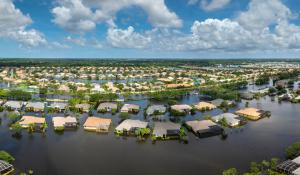Does money have to be “at the root of all evil,” as the old saying goes? It can be. It buys resource-intensive “stuff” that damages the Earth and runs up debt. It gets deposited in mega-banks that take advantage of Main Street to pad the coffers of greedy, predatory Wall Street businesses. It’s the driving force behind industries like the fossil-fuel companies that harm the environment and heat up the planet.
But your money—and what you choose to do with it—also has considerable power to create meaningful, significant, positive change. You need to save anyway, and by moving your money into the right savings and investing vehicles, you can ensure that it simultaneously works for your future and for a greener planet and healthier communities worldwide.
It’s called socially responsible investing (SRI), and it’s a strategy that’s continuing to skyrocket in popularity. In 2014, Americans put $6.57 trillion in managed investments to work pressuring corporations to clean up their acts, bolstering forward-thinking companies working on sustainable solutions, and lifting up low-income communities across the US and around the world, according to the Forum for Sustainable and Responsible Investment.
That’s an enormous growth of 76 percent from just two years prior, when that figure was $3.74 trillion. More and more, people are demonstrating that where you save and invest your money, even if you don’t have a lot, can change the world.
If you’re new to socially responsible investing, turn the pages, and we’ll show you the many different strategies that, together, make up SRI. And don’t worry if you don’t have a lot of extra cash to invest. Even $100, put in the right place, can make a difference (see below).
If you’re one of the tens of thousands of Green Americans who’ve been greening your savings and investments for years with us, you’ll find the latest news and strategies to help you make the most of your money’s impact on the world.
It Doesn't Take Much…
1. Open a savings or checking account with a community development bank or credit union, which makes it their mission to lift up low-income communities. Minimum amount to open an account: $10-$100
2. Swap your mega-bank credit card for a responsible credit card with a community development bank or credit union. Minimum amount to open an account: $0
3. Have a workplace 401(k) or 403(b) retirement account? Allocate as much of your salary as you can to your workplace retirement account, and take advantage of any socially responsible investing (SRI) options offered. If your employer plan doesn’t have any, give your boss our free guide: Plan for a Better Future: How to Add SRI Options to an Employer’s Retirement Plan. Minimum amount to start: $50-$100.
4. Get a Certificate of Deposit (CD) with a community development bank or credit union and support fully insured lending that makes a difference for families and communities. Minimum amount to invest: $100+.
5. Invest in domestic and international projects that have a big impact, involving microfinance, Fair Trade, women’s empowerment, small business, education, and more. For only $20-$25, you can invest in projects around the world that have a big social impact—and may even have financial returns for you—on platforms like Vested.org (which partners with Calvert Foundation)
or Kiva.org. Minimum to start: $20-$25.
6. Invest in a socially responsible mutual fund. If you plan to invest in the stock market, you can put money into a mutual fund that makes a point of investing in responsible companies, purging the worst companies from its portfolio, and exerting its shareholder influence to get borderline companies to improve. Find one in the “Financial—Mutual Funds” section of Green America’s National Green Pages®, greenpages.org. $500+
Resources
Find a community development bank or credit union
Find a responsible credit card
Get the free guide to SRI retirement options
Find a socially responsible mutual fund
(m) Designates a certified member of Green America’s Green Business Network®







